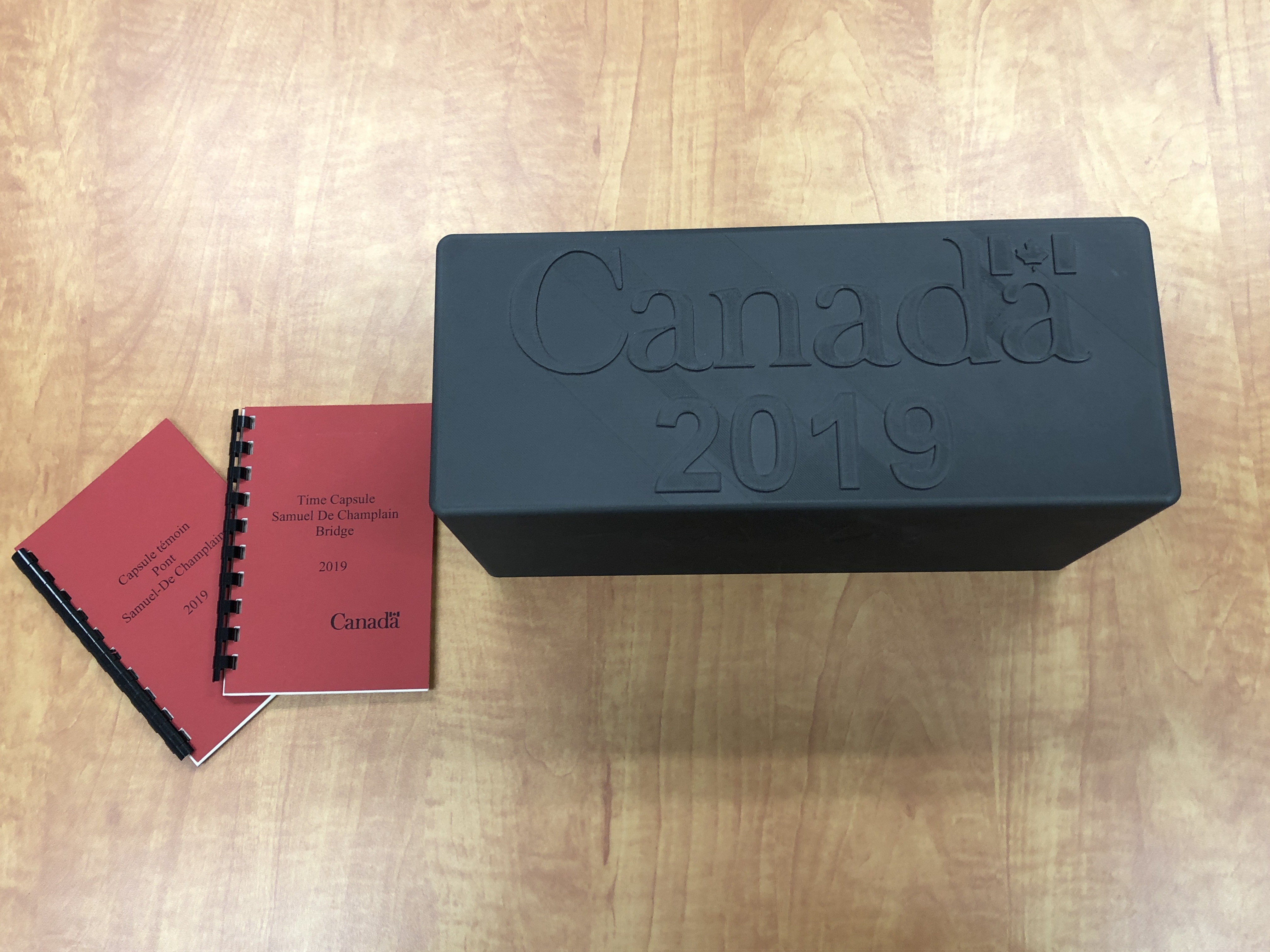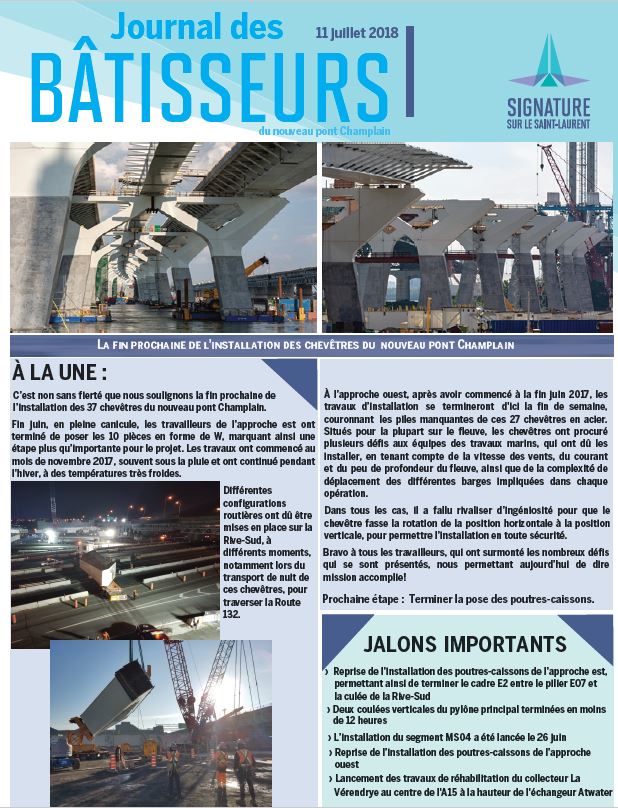Samuel De Champlain Bridge - Time Capsule
Infrastructure Canada is proud to present the time capsule for the Samuel De Champlain Bridge.
The capsule and all of its contents were generously donated by Canadian organizations or individuals. The story behind each item gives a glimpse into life in 2019, from history and culture to science and technology, as well as the construction of the Samuel De Champlain Bridge.
Selecting which items to include was no easy task. The choices were almost limitless and it would be impossible to fully encapsulate the richness of Canada's culture, society and history.
Instead, we hope that when the time capsule is recovered, its contents will spark a discussion about how life has changed for Montrealers and the rest of Canada.
Indeed, we hope that this time capsule, just like the bridge where it is housed, will help bridge centuries, people and ideas across time.
Minister François-Phillippe Champagne – Samuel de Champlain Bridge Time Capsule Video
(Transcript)
Be part of the conversation by following us on Twitter (@INFC_eng, @INFC_fra), Facebook and Instagram, and using #BridgingCenturies
This time capsule contains the following items:
- 3-D Printed Capsule Box
- Letter from the Minister of Infrastructure and Communities, the Honourable François-Philippe Champagne
- Seeds: the Three Sisters the Mohawk Council of Kahnawá:ke
- Two Row Wampum Belt from the Mohawk Council of Kahnawá:ke
- Editorial Cartoons by Aislin (Terry Mosher) – Part I and Serge Chapleau – Part II
- Royal Canadian Mint: 2019 Classic Uncirculated Set
- Bank of Canada Notes
- Signed Hockey Puck from the Montréal Canadiens (NHL)
- Montréal Pride: LGBTQ+ Flag
- Baton Signed by Maestro Kent Nagano from Orchestre Symphonique de Montréal (OSM)
- BIXI Key
- Maple Syrup from the Quebec Maple Syrup Producers
- Letters from Schoolchildren
- Pocket Dictionaries
- Silver Coin and Crests from the Canadian Space Agency (CSA)
- Items Commemorating Bridge Namesake Samuel De Champlain
- Toll Token and Receipt from the Original Champlain Bridge (1962 – 1990)
- Gate Dowel from the St. Lawrence Seaway Management Corporation
- Items Representing Bridge Workers
- Envision Award Certificate and Pen
- Iron Ring from Guy Mailhot, Chief Engineer, Infrastructure Canada Samuel De Champlain Bridge Corridor Project
- Maple Tree and Blueberry Seeds – Agriculture and Agri-Food Canada
- Photos of the existing Champlain Bridge and the construction of the Samuel De Champlain
3-D Printed Capsule Box
Dr. Jérôme Claverie and his team at Université de Sherbrooke designed and created the unique and customized box for the time capsule.
Dr. Claverie is a Canada Research Chair in Organic and Hybrid Advanced Materials. His work has helped to solve the scientific, technological and economic challenges associated with creating, producing and sustainably using materials.
Built with a 3-D printer, the capsule is made from a composite polymer of both organic and inorganic materials. The box was printed around the items so that it could be completely sealed. Together, the choice of material and the construction method aimed at ensuring that the capsule and its contents remain intact for the lifespan of the bridge.
Watch a video of the time capsule being sealed into the Samuel De Champlain Bridge for a 125-year slumber.
Letter from the Minister of Infrastructure and Communities, the Honourable François-Philippe Champagne

In his letter, Infrastructure and Communities Minister François-Philippe Champagne highlights the significance of the Samuel De Champlain Bridge Corridor Project and recognizes the excellence and dedication of everyone involved in the project.
Seeds: the Three Sisters the Mohawk Council of Kahnawá:ke
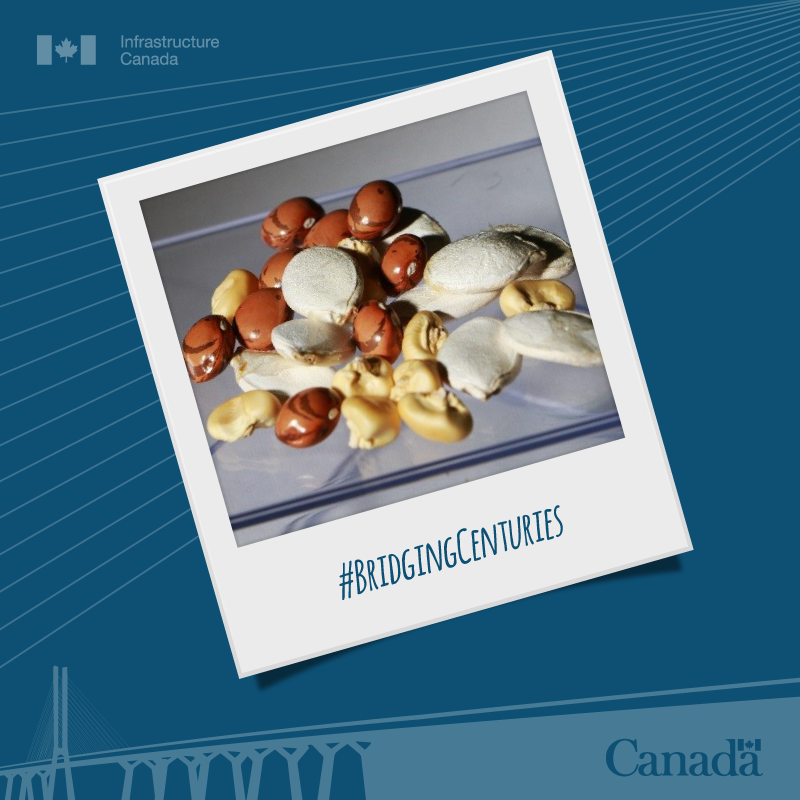
The Three Sisters: Beans, squash and corn—are native North American plants that have been grown together for centuries by North America's Indigenous peoples. Scientifically speaking, it was advantageous to grow these crops together to ensure sustainability.
Two Row Wampum Belt from the Mohawk Council of Kahnawá:ke
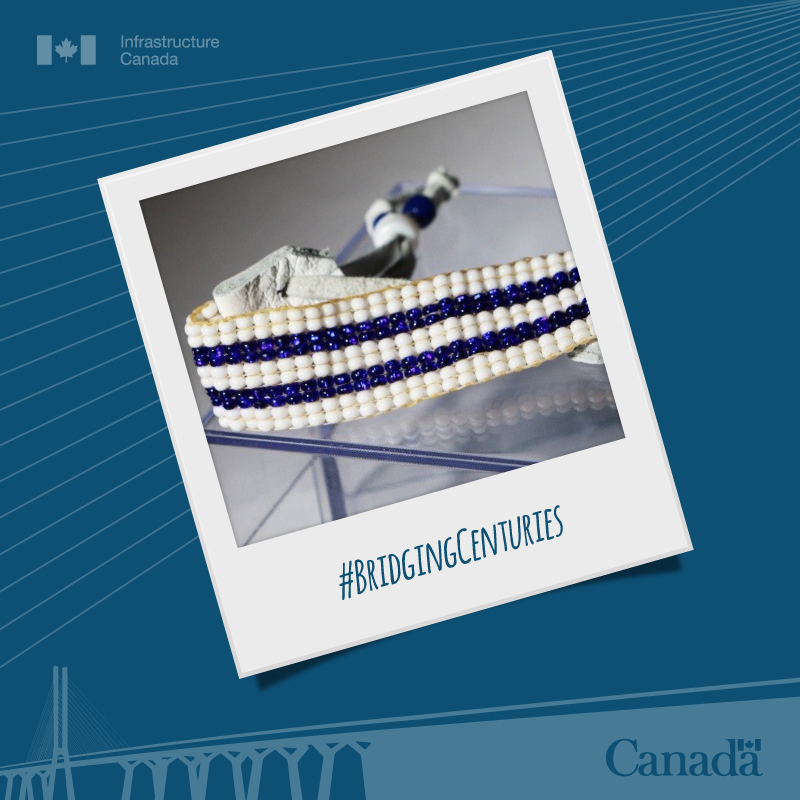
The Two Row Wampum belt was handmade by John Ranch, an artisan member of the Kahnawá:ke. The Wampum belt is a sacred gift of friendship and diplomacy. Traditionally crafted from tubular white and purple beads made from seashells found only on the shores of the Atlantic Ocean during 16th and 17th centuries, the belts were an important form of currency and were later a key tool in diplomatic relations.
The Mohawk Council of Kahnáwa:ke are important partners in the Samuel De Champlain Bridge project. Several of their community members also worked on the construction team; the majority as steel workers.
Editorial Cartoons by Aislin (Terry Mosher) – Part I and Serge Chapleau – Part II

Editorial cartoonists Aislin (Terry Mosher) and Serge Chapleau are renowned not only in Montreal but across Canada for their artistic interpretations of current events.
A cartoonist for the English daily newspaper The Montreal Gazette and publisher of several books, Aislin lets his pencil do the talking to express a political or social commentary through his drawings.
As the in-house caricaturist for Montreal's French newspaper La Presse and the creative force behind the television series Gérard D. Laflaque, Serge Chapleau also enjoys expressing his point of view via mass media.
The editorial cartoons included in the time capsule were created by Aislin and Chapleau specifically for this project.
Royal Canadian Mint: 2019 Classic Uncirculated Set
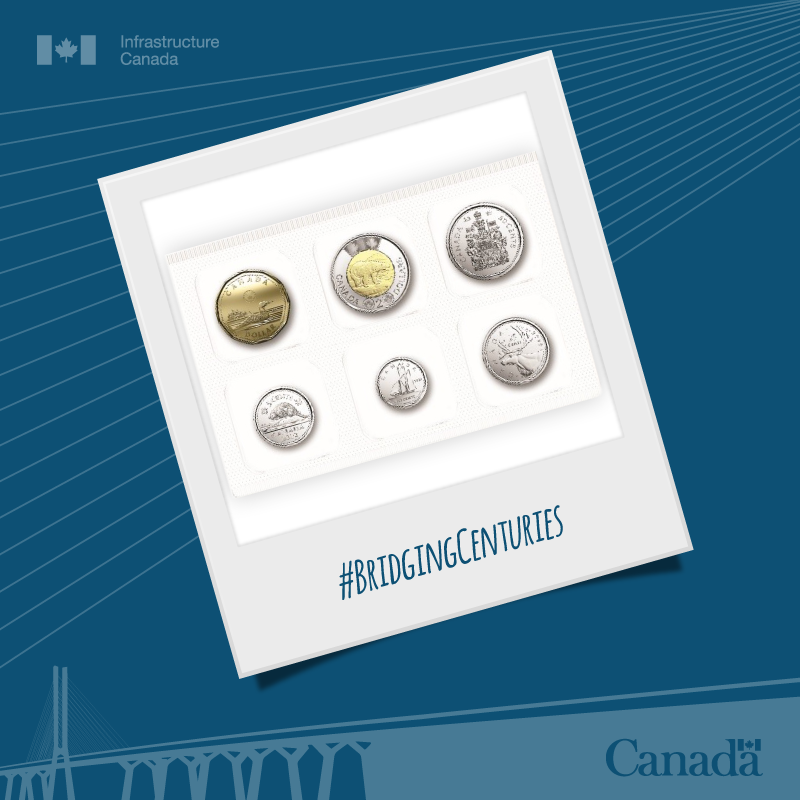
Canada's circulation coins feature timeless images that come together to tell the story of our past; of our varied landscape; and the pride of our citizens, from coast to coast to coast.
The 2019 Classic Canadian Coin Set includes an uncirculated example of each of Canada's current circulation coins: 5 cents, 10 cents, 25 cents, 50 cents, $ 1 (loonie) and $ 2 (toonie).
Its classic designs, used since 1937, are as iconic as the subjects they depict.
Bank of Canada Notes

Among the bills that came into circulation in 2019 is the vertical $10 bill featuring Viola Desmond as well as denominations of $5, $10, $20, $50 and $100.
A successful Black Nova Scotia businesswoman, Ms. Desmond refused to leave a whites-only area of a movie theatre in 1946 and was subsequently jailed, convicted and fined. Her court case is one of the first known legal challenges against racial segregation brought forth by a Black woman in Canada.
Signed Hockey Puck from the Montréal Canadiens (NHL)

The official game day puck is signed by:
- Geoff Molson, Owner
- Marc Bergevin, General Manager
- Claude Julien, Head Coach
- Shea Weber, Team Captain
The Montréal Canadiens were founded by J. Ambrose O'Brien on December 4, 1909, as a charter member of the National Hockey Association, the forerunner to the National Hockey League. The Canadiens won their first Stanley Cup championship in 1915-1916. In 1917, completed by four other NHA teams, the Canadiens formed the NHL and won their first NHL Stanley Cup during the 1923-1924 season.
Montréal Pride: LGBTQ+ Flag

The rainbow flag is a globally-recognized symbol for the LGBTQ+ (Lesbian, Gay, Bisexual, Transgender, Queer and Others) community.
The first Gay Pride march was organized in Montréal in 1979, bringing together 52 marchers. In 2018, the annual Montréal Pride festival mobilized more than 9,500 in front of a crowd exceeding 300,000 people.
In 2019, Canada marks the 50th anniversary of the decriminalization of homosexuality. Same-sex marriage was legalized in Canada on July 20, 2005.
Baton Signed by Maestro Kent Nagano from Orchestre Symphonique de Montréal (OSM)
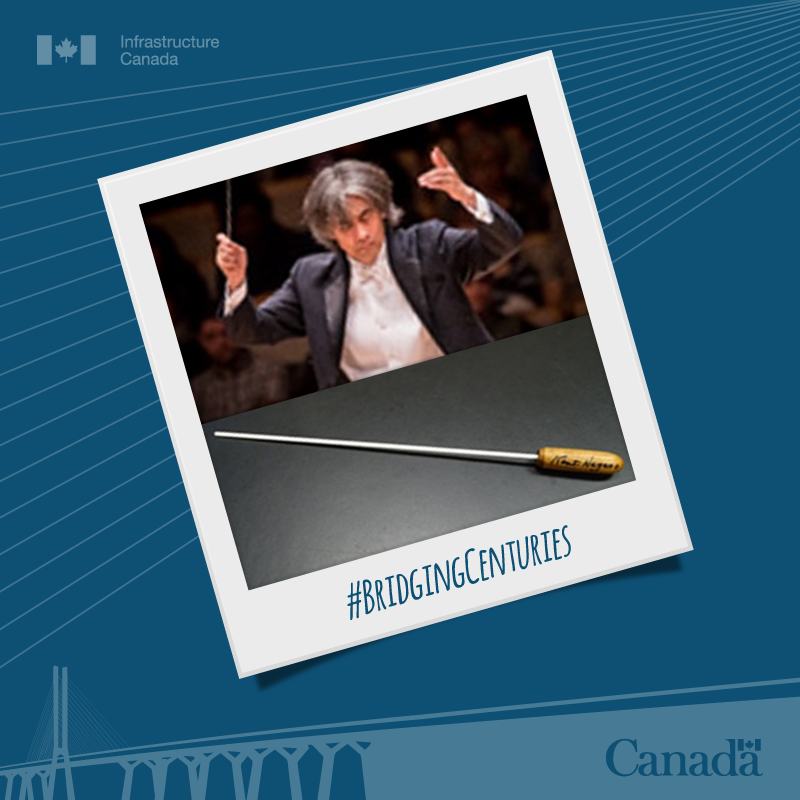
Orchestre symphonique de Montréal (OSM) celebrated its 85th season in 2018/2019. The internationally renowned orchestra is just one example of the richness of cultural offerings in the city.
The OSM is led by world famous conductor, Kent Nagano.
He was named Commander of the Ordre de Montréal, Grand Officer of the Ordre national du Québec, Companion of the Ordre des arts et des lettres du Québec, in addition to receiving the Governor General's Meritorious Service Medal.
Maestro Nagano released numerous recordings with the OSM as well as directed the orchestra during many tours in Europe, in North America, in Latin America, in Asia and two memorable visits in Nunavik and Côte-Nord.
BIXI Key

Montrealers are passionate about cycling so it's not surprising that the
first bike-sharing system in North America, known as BIXI, was born in 2007 in Montréal. This project, named one of the best inventions of the year by Time Magazine, offers Montrealers a fun, eco-friendly mode of transportation with access to bikes across the city.
In 2008, Montréal became the first city in North America to have a bike-sharing system, and on May 12, 2009, the first BIXI season was officially launched.
The Samuel De Champlain Bridge includes a multipurpose path that can be used by cyclists.
Maple Syrup from the Quebec Maple Syrup Producers
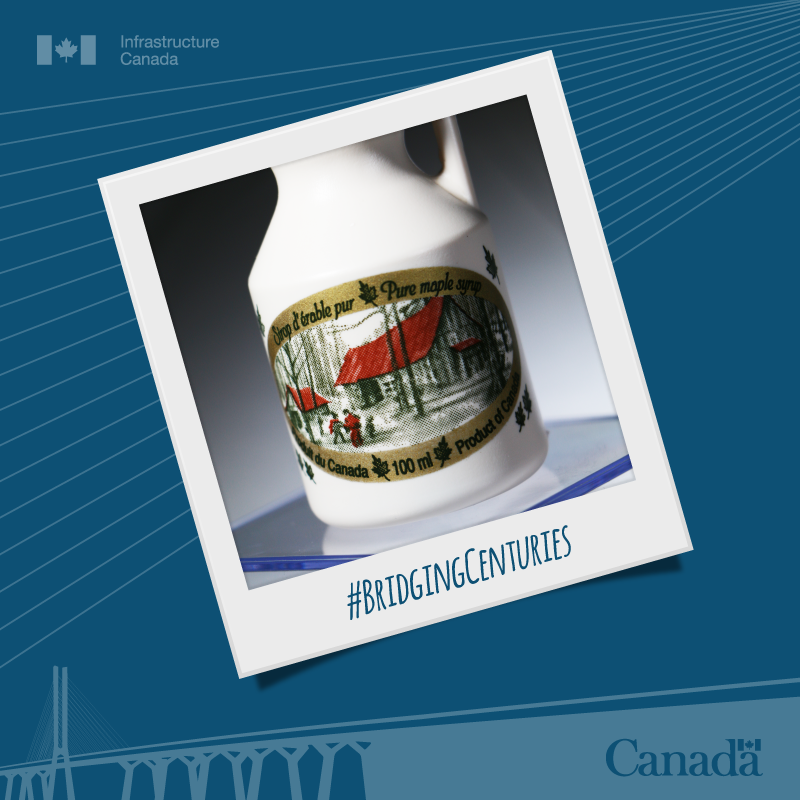
The maple tree is a symbol representing Canada – the maple leaf is even featured on the national flag. The production of maple syrup is part of our culture and economy as well as an annual sugaring off ritual.
In 2019, the Québec Maple Syrup Producers represented 11,300 producers and 7,400 maple syrup companies whose quality of work allowed Quebec to provide, on average, 72% of the world's maple syrup production.
Letters from Schoolchildren

For students attending school on Île des Soeurs between 2015 and 2019, the construction of the Samuel De Champlain Bridge was a unique opportunity to closely witness the immense structure taking form. Over the course of the project, several activities were planned to engage local youth.
For the time capsule, fifth and sixth grade students from École des Marguerite were asked to write and answer various questions that would provide a glimpse into how they saw the world in 2019 while speculating on the future.
Watch a video of students from École des Marguerite describing their ideas about the future and the legacy of the Samuel De Champlain Bridge to future kids through handwritten notes.
Pocket Dictionaries

In 2019, English and French remain the two most commonly spoken languages in Montreal and Canada. However, according to Statistics Canada, nearly six per cent of the national population speaks another language.
The year 2019 is the 50th anniversary of the Official Languages Act. The purpose of this legislation is to:
- Ensure respect for English and French and the equality of status and equal rights and privileges of their use in federal institutions;
- Support the development of English and French linguistic minority communities;
- Advance the equal status and use of English and French.
Silver Coin and Crests from the Canadian Space Agency (CSA)
The Canadian Space Agency issues crests for every space mission in which Canada is involved. Two have been included in the time capsule.
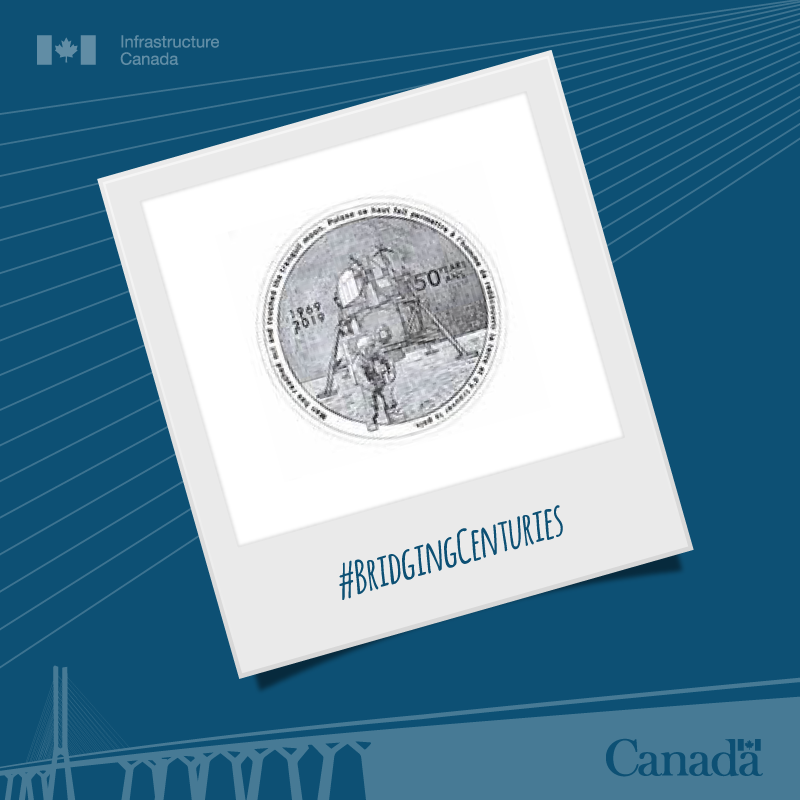
This stunning fine silver coin pays tribute to the 50th Anniversary of the Apollo 11 Moon Landing. The convex shape of the coin conforms perfectly to the spherical shape of the moon.
The design features an astronaut on the moon's cratered surface and the Apollo 11 Lunar Module, the landing gear for which was manufactured by Canadian company Héroux-Devtek.
Along the circumference of the coin are the words of the goodwill message sent by then-Canadian Prime Minister Pierre Elliott Trudeau to the moon landing mission, on behalf of all Canadians: “Man has reached out and touched the tranquil moon. Puisse ce haut fait permettre à l'homme de redécouvrir la terre et d'y trouver la paix. (May that high accomplishment allow man to rediscover the Earth and find peace).”
Marc Garneau's Mission: STS-41-G Crest
(October 5 to 13, 1984)
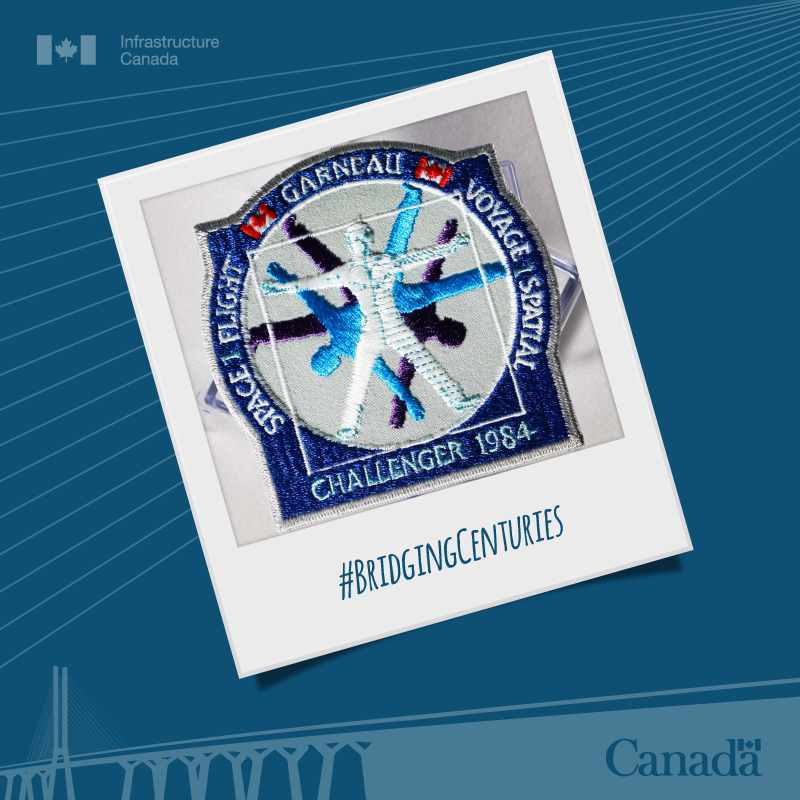
The National Research Council mission crest for 41-G commemorates the first space flight by astronaut Marc Garneau (currently the federal Minister of Transport).
The design is based on Leonardo da Vinci's famous The Proportions of the Human Figure, the drawing of a man whose outstretched arms touch the perimeter of a square and whose feet, the circumference of a circle. In this case, the central figure and two others, free-floating behind it, denote weightlessness in zero-gravity. The three figures represent the different research areas involved in the experiments Garneau conducted during his mission - space technology, space science and life sciences.
David Saint-Jacques' Expedition: 58 Mission Crest
(December 3, 2018 to June 2019)
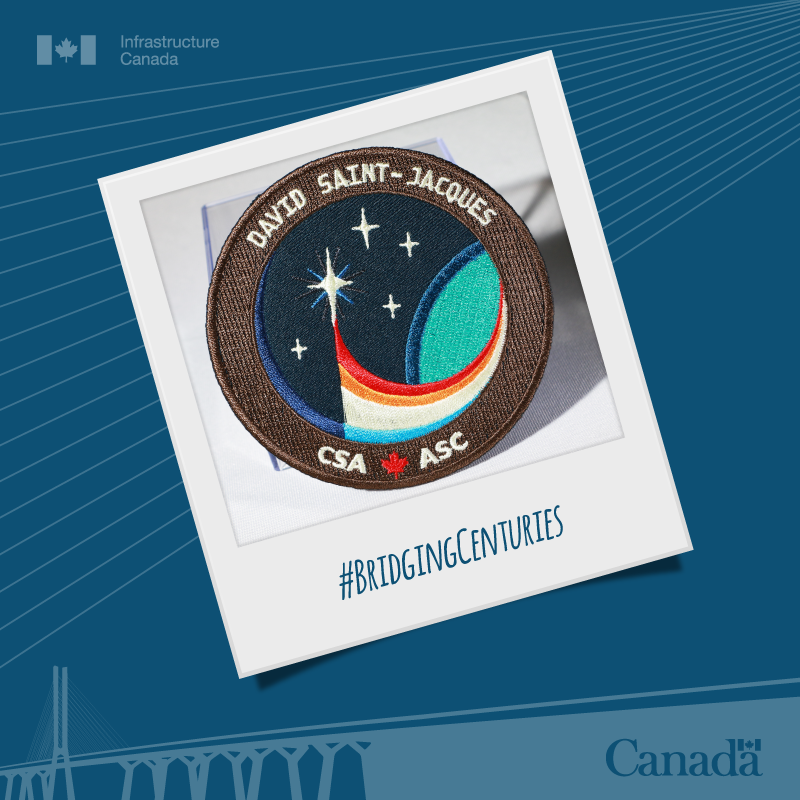
This mission patch was designed for the first space flight of Canadian Space Agency astronaut, David Saint-Jacques.
The image represents the power of dreams and evokes the role of space exploration in our evolving perspective of life on Earth. The North Star (dreams) and compass rose (reason) have always guided explorers. These form the central element of the patch. The trail of the star is composed of four colours, signifying pillars of innovation: red (energy and passion), orange (creativity), white (science) and blue (international collaboration). The four stars surrounding the North Star symbolize all those who pool their talents in support of this mission. Earth figures prominently on the patch. In space, the splendour and fragility of our planet are revealed. In this way, space exploration gives us a new perspective on our world.
Items Commemorating Bridge Namesake Samuel De Champlain
$3 Coin: 400th Anniversary of Samuel De Champlain in Huronia
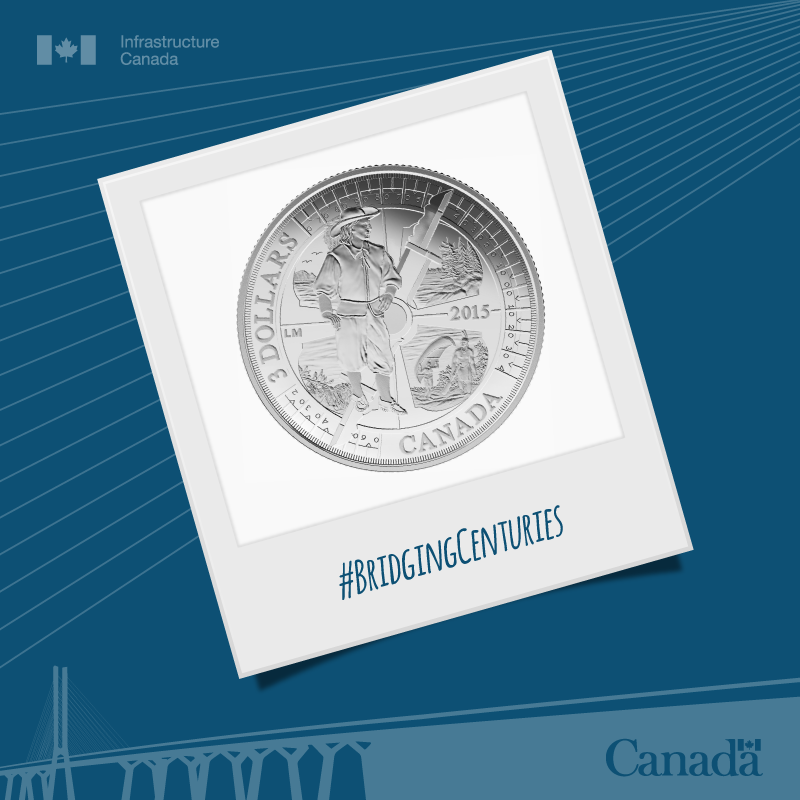
In 2015, Canada marked the 400th anniversary of Samuel De Champlain's voyage of discovery through Huronia. The Royal Canadian Mint celebrated this foundational moment in Canadian history on a 99.99% fine silver coin.
The reverse design by Canadian artist Laurie McGaw is uniquely engraved to emulate the famed 17th century astrolabe—long attributed to Champlain—found in Cobden, Ontario. Against this navigational tool is set a full-body portrait of Samuel De Champlain. Through the spaces between the astrolabe's latitude and longitude crosshairs, we are presented with engravings of scenes from Champlain's journeys in Huronia, including an image of a tall sailing ship and a scene in which Huron guides assist Champlain on portage
Stamp - Champlain Surveys the East Coast (2006)
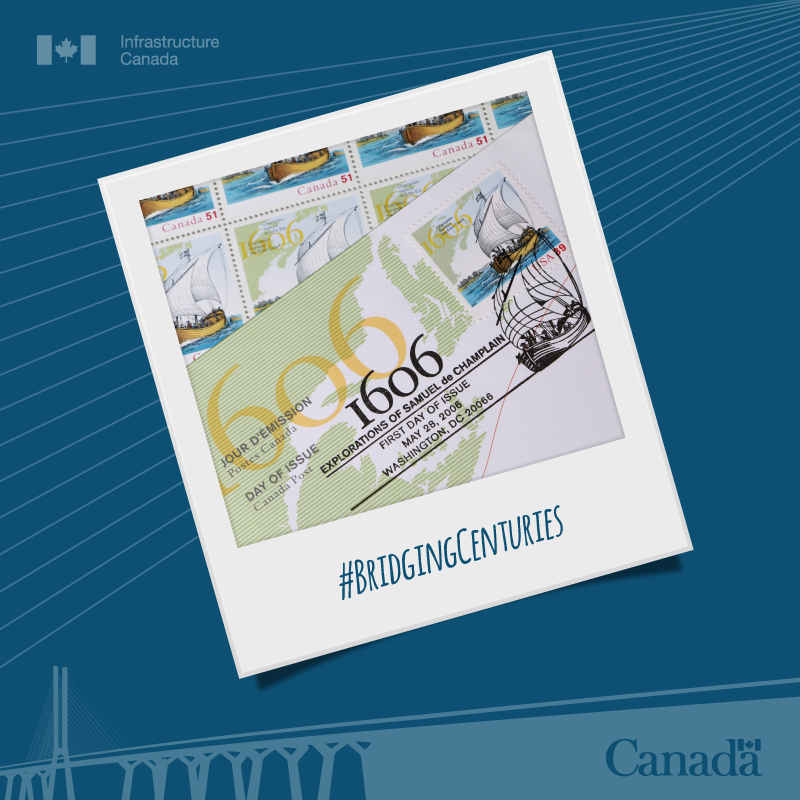
In 2006, Canada Post issued the stamp Champlain Surveys the East Coast – A joint issue with the United States that features Samuel De Champlain's 1606 exploration of the east coast of North America.
The explorer and bridge namesake was a cartographer by trade. He accompanied the first French settlers in North America to map out new territories. His earlier maps and drawings of eastern North America were remarkably accurate, and his copious journals recorded detailed drawings of local flora and fauna.
Stamp : Mathieu Da Costa (2017)
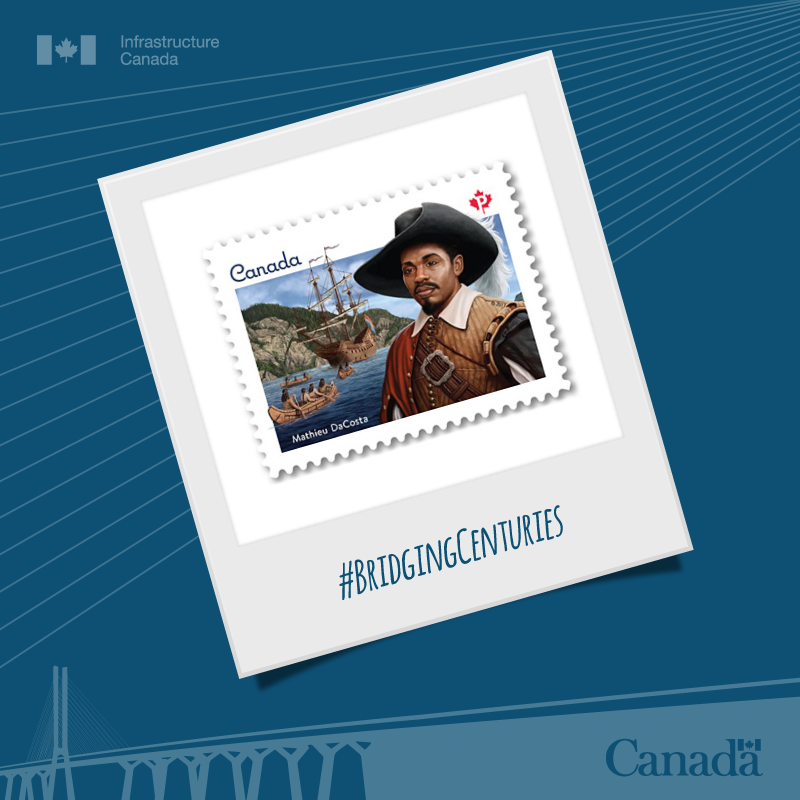
In February 2017, Canada Post released a stamp featuring Mathieu Da Costa for Black History Month. Da Costa was the first recorded person of African descent to reach Canada. It is believed that Da Costa was a free man who worked as an interpreter for Europeans trading with Indigenous people in the New World. Evidence of this includes a document stating that in 1608, the year Samuel de Champlain founded the city of Québec, Da Costa agreed to work for French fur-trader, explorer and governor of Acadia, Pierre Dugua de Mons.
While Mathieu Da Costa's story may never be fully known, his unique connection with our country is a reminder of the values of respect, acceptance and diversity that Canadians cherish and celebrate.
Toll Token and Receipt from the Original Champlain Bridge (1962 – 1990)

When the original Champlain Bridge opened, all motorists were required to pay a toll of 25 cents per crossing. Additionally, commercial truck operators were required to purchase a 10 dollar ticket allowing them to cross with their freight.
Toll collection for the Champlain Bridge ended in May 1990.
In keeping with this decision, the Samuel De Champlain Bridge, which was built to replace the Champlain Bridge, is a toll-free crossing.
Gate Dowel from the St. Lawrence Seaway Management Corporation
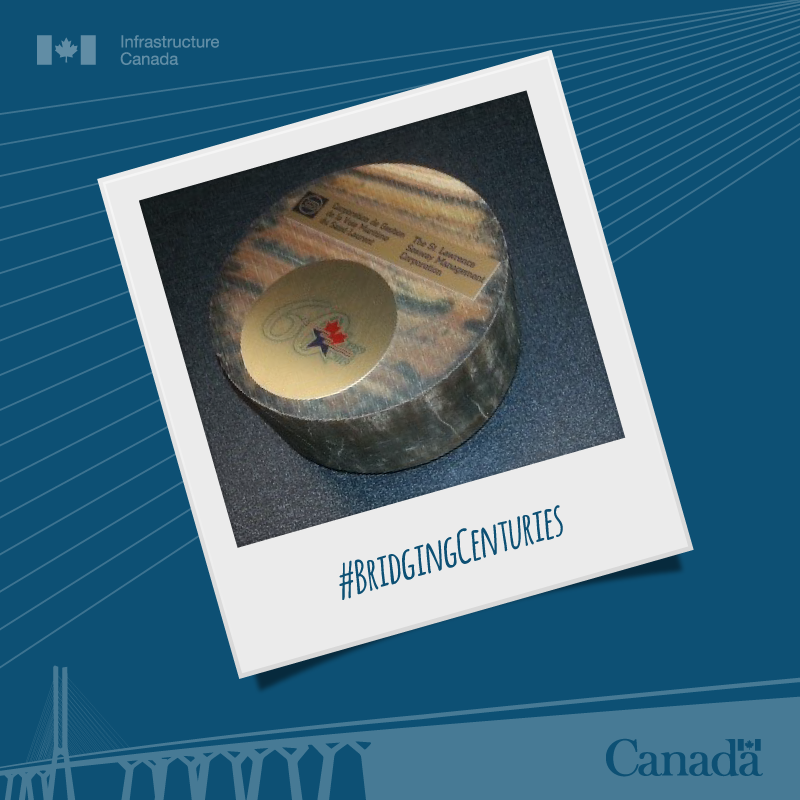
Celebrating its 60th anniversary in 2019, the St. Lawrence Seaway is considered one of the outstanding engineering feats of the 20th century. A major navigational and trade channel in North America, connecting the Atlantic Ocean to the Great Lakes, it spans from Montreal to Lake Erie in Michigan State. It also includes 13 Canadian and two U.S. locks. Since 1959, more than 2.5 billion tonnes of cargo estimated at $375 billion have moved through the seaway to and from Canada, the United States and nearly 50 other nations.
The seaway runs underneath the Samuel De Champlain Bridge. The presence of the seaway played a key role in determining the iconic design of the structure and its method of erection. The cable-stayed bridge design, which features the main pylon and 15 main span segments supported by 60 cables, allows for the clearance necessary to provide unobstructed access through the seaway for large cargo ships.
Items Representing Bridge Workers
Health and Safety Manual

At the height of construction activities to build the Samuel De Champlain Bridge, there were approximately 1,600 people working its structure and corridor components.
Ensuring the health and safety of these workers at all times was the utmost priority for both the Government of Canada and Signature on the Saint Lawrence (SSL), the private partner responsible for construction.The SSL health and safety manual was distributed to all employees. The booklet is symbolic of the safety record of this project.
Newsletter: Journal des bâtisseurs
Copies of the Journal des bâtisseurs were distributed to all workers during the bridge's construction. The newsletter was an important means of communicating to all workers about work-related issues as well as celebrating key milestones and achievements.
Tape Measure
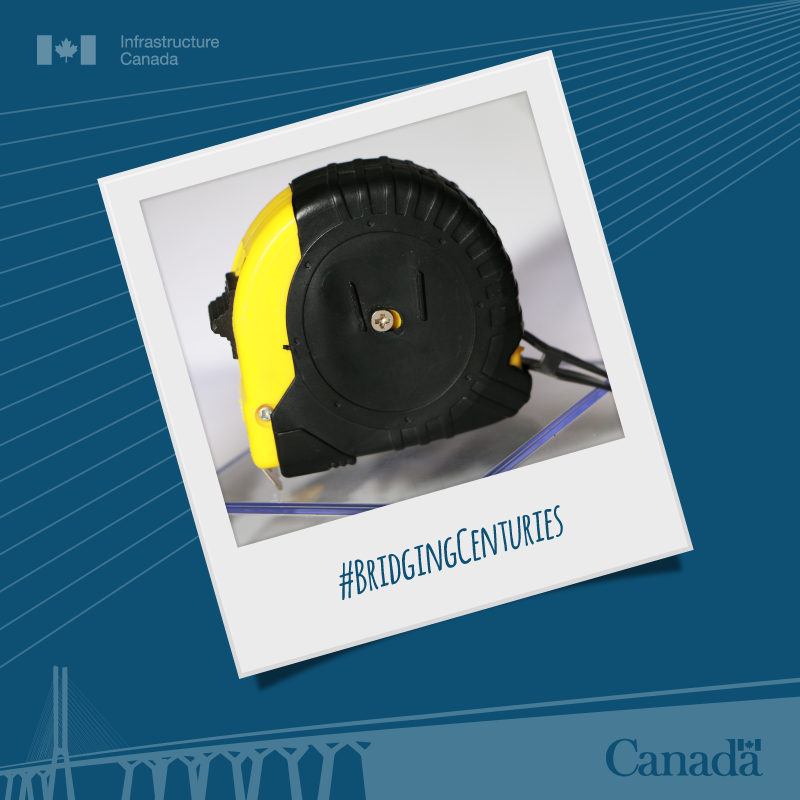
This tape measure was selected to represent all workers who contributed to the Samuel De Champlain Bridge. Used on the construction site between 2015 and 2019, its imperial and metric units of measure demonstrate that, in 2019, both systems continued to be used in the construction industry.
Envision Award Certificate and Pen
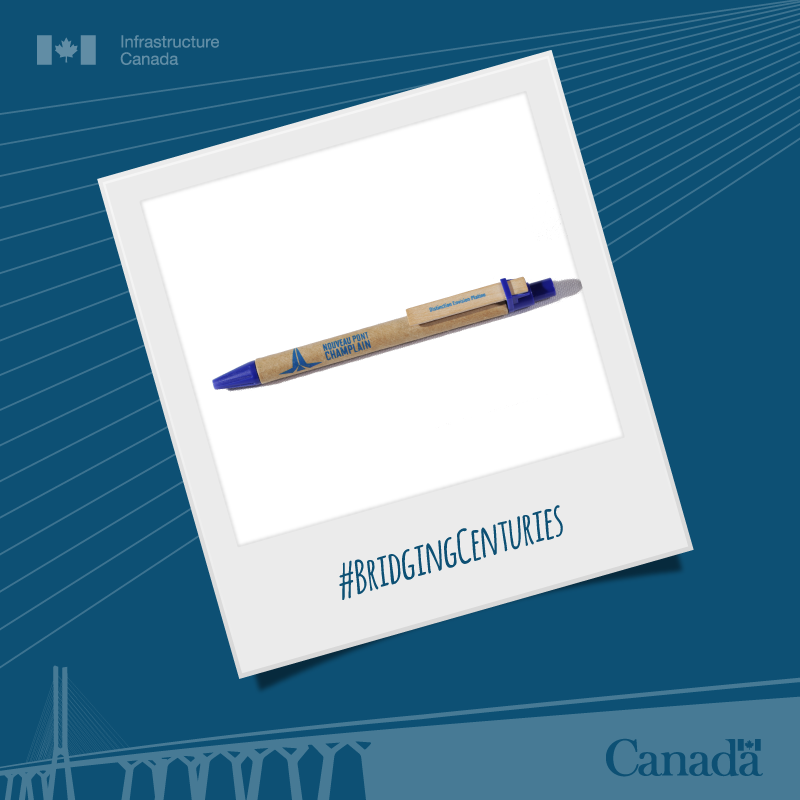
The Samuel De Champlain Bridge was the first large-scale bridge project to receive an ENVISION® award in Canada. In 2018, the project received a platinum level award for sustainability from the Institute for Sustainable Infrastructure based in Washington, D.C. The award recognizes the achievement of the highest standards of sustainable development and environmental performance of an infrastructure project.
To mark this important recognition, Signature on the Saint Lawrence, the private partner responsible for building the bridge, commissioned a pen for employees and partners made of recycled paper and wood with the inscription Distinction Envision Platinum.
Iron Ring from Guy Mailhot, Chief Engineer, Infrastructure Canada Samuel De Champlain Bridge Corridor Project
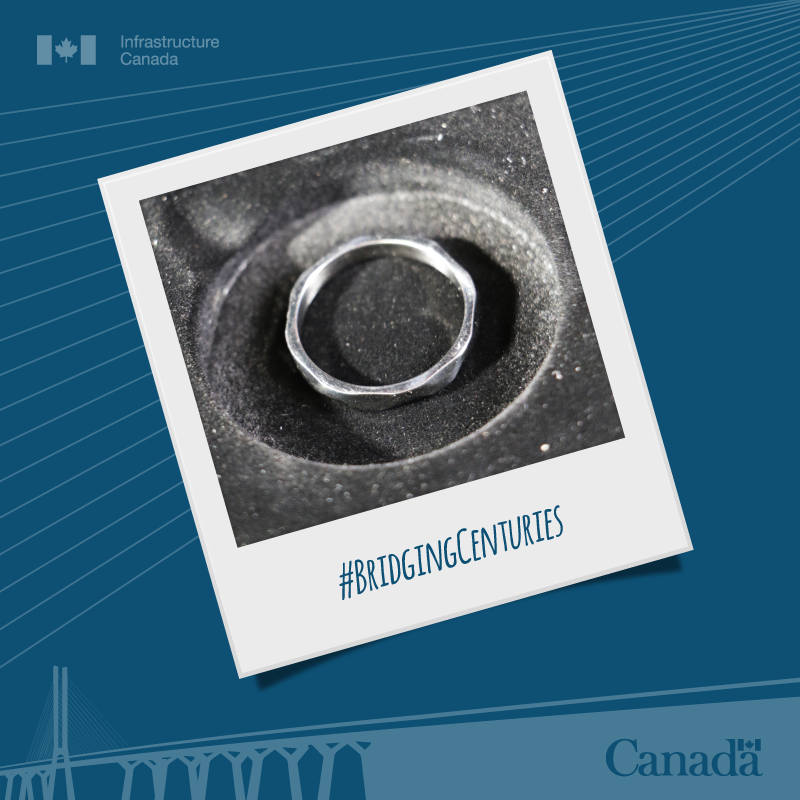
A tradition dating back to 1922, the Iron Ring is worn by Canadian engineers. The ring is given to engineers as a rite of passage and symbolizes the wearer's commitment to the profession.
The hammered iron ring is given in commemoration of the 88 human lives that were lost in the two collapses of the Quebec Bridge (1907 and 1916) and serve as a reminder of the foremost responsibility of an engineer—the health and safety of the public.
Guy Mailhot, ING., M.Eng, FCSCE, FEIC is the Government of Canada's chief engineer on the Samuel De Champlain Bridge.Maple Tree and Blueberry Seeds – Agriculture and Agri-Food Canada
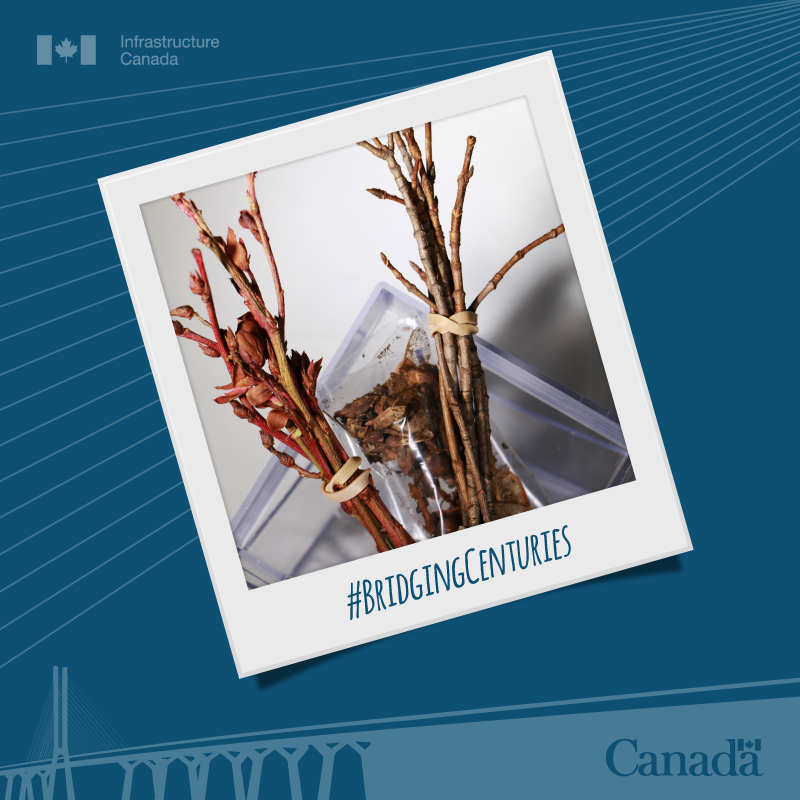
Maple Tree (Acer Saccharum):
A plant native to North America, whose leaf is the emblem of the Canadian flag. The maple is valued using methods learned from the First Nations. Canada is currently the world's largest producer of maple products.
Blueberry Plant (Vaccinium Corymbosum):
A shrub that is native to North America, the blueberry plant is prized thanks to methods learned from First Nations. For many First Nations peoples, blueberry picking is a quasi-spiritual community activity during which they commune with nature. Canada is currently the world leader in blueberry production.
Photos of the existing Champlain Bridge and the construction of the Samuel De Champlain
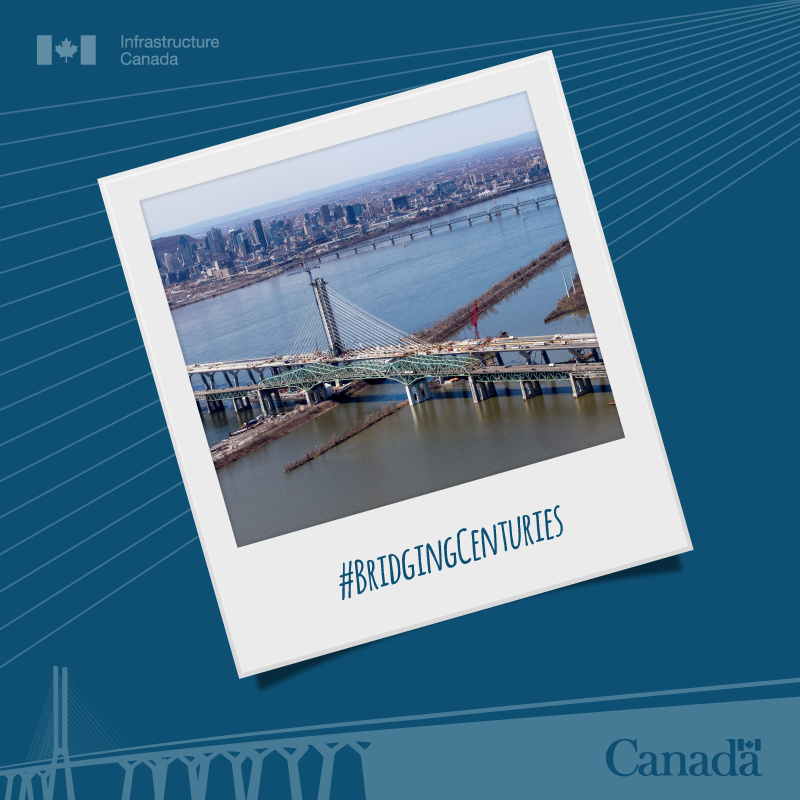
In the 1950s, many young families were moving to Montreal's South Shore. This migration and increase in vehicles necessitated a new link between the city and suburbs.
Opened to traffic on June 28, 1962, the six-lane Champlain Bridge eased congestion on other bridges while providing an express route to theEastern Townships and the United States.
Montreal's climate subjected the Champlain Bridge to harsh meteorological conditions: such as cold, snow, wind as well as hot and humid summers. All these factors, in addition to the introduction of road salt for de-icing purposes as well as an increase in heavy trucking, contributed to the accelerated deterioration of the bridge.
In 2011, the federal government announced that a replacement bridge would be built. Construction on the Samuel De Champlain Bridge began in June 2015.
Third-Party Information Liability Disclaimer: Some of the content linked above was prepared by external sources. The Government of Canada is not responsible for the accuracy, reliability or currency of the information supplied by external sources. Users wishing to rely upon this information should consult directly with the source of the information. Content provided by external sources is not subject to official languages, privacy and accessibility requirements.
- Date modified:
